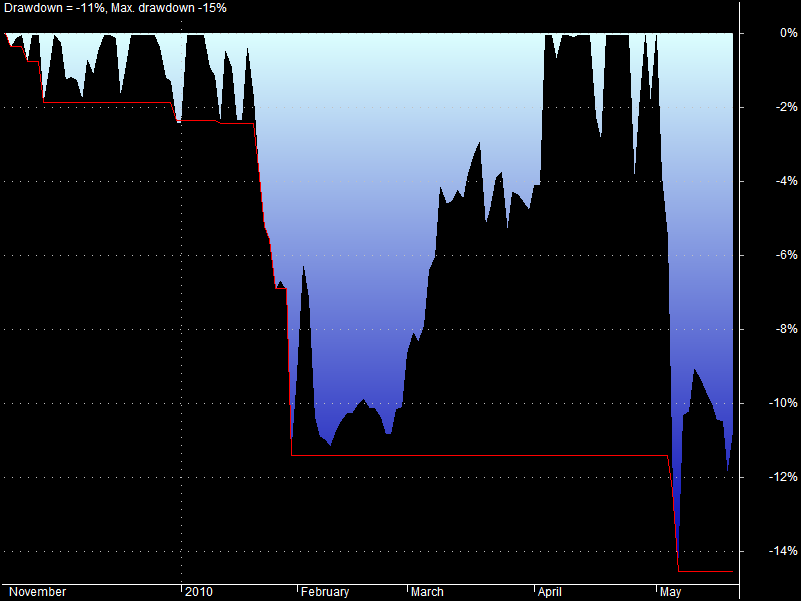How To Profit From Risk_3
Post on: 16 Март, 2015 No Comment

Risk/Reward, Profit Factor and Profitability of Trading Strategies
It is amazing how many traders, specially newbie traders, emphasize how this or that system wins 80% or 90% of the time, as if that is the only thing that matters. When in fact, only the combination of the success rate plus the risk/reward ratio of the trades should be analyzed as a whole.
Let’s say for example you are a currencies trader who has a mechanical system that wins 90% of the trades in back test. That’s 9 winners out of 10 trades. Now, if that one loser is big enough, it can wipe out all the profits of the previous 9 winners, resulting in a flat account balance. That’s the typical behavior found in scalpers. If the risk reward in your system is 9:1, that is your risk is typically 9 times bigger than your target profit, then winning 90% of your trades means you don’t make any money after all. Thus, it is really important to talk about risk/reward when you mention winners percentage, otherwise talking about success rate is meaningless.
Other traders will favor the favorable risk rewards, where your risk is smaller than your potential reward. Usually 1:2 or 1:3 is desired. Then they become so obsessed about this, that they will look at your system and will invariably say, well your typical risk/reward is only 1:0.8 (That is your winners are on average 80% the size of your losers, so losing trades are bigger), so that’s not a good system, immediately jumping to conclusions. However, your 1:0.8 risk reward system might win 75% of the time, which would make it a very valid and profitable system regardless of the criticized non-favorable risk/reward.
Now a little exercise to compare systems.
How can I determine if a system of a 9:1 risk reward ratio that wins 92% of the time is more profitable than a system with a 1:2 risk reward ratio that wins 50% of the time?
This calculation is what is known as Profit Factor. which tries to determine how many dollars you make per every dollar you lose. How to calculate the Profit Factor? Simple:
System number 1:
Wins 92% of the time. That is 92 trades out of 100.
Risk Reward ratio is 9:1 meaning if the typical winners is 1$ the typical loser will be $9.
Now, you do the math, 92 winning trades of 1$, that’s $92 in positive territory.
Versus 8 losing trades of $9 dollars, that’s $72 lost.
Finally you divide $92/$72 and that’s a Profit factor of 1.28. Meaning, you make $1.28 for every dollar you lose.
System number 2:
Wins 50% of the time. That is 50 trades out of 100.
Risk Reward ratio is 1:2 meaning if the typical winners is 2$ the typical loser will be $1.
Now, you do the math, 50 winning trades of 2$, that’s $100 in positive territory.

Versus 50 losing trades of $1 dollar, that’s $50 lost.
Finally you divide $100/$50 and that’s a Profit factor of 2.00. Your strategy makes $2 for every dollar it loses.
A profit factor lower than 1 means the system is not good, a.k.a it loses money. A profit factor of 1 means your system has no particular edge: it loses the same amount of dollars it wins. I would say a profit factor north of 1.25 is probably a good number that implies (over long periods of time, and statistically enough data) a possible real edge.
System number two has a higher profit factor. It makes more money for every dollar it loses. Now, this by itself doesn’t mean that system number 2 is better. We haven’t considered the opportunities factor. How frequently does system number 2 trade? So, although the profit factor of this system is much higher then that of the first one, maybe it only trades once every month, while the first one trades 15 times every month. In that case you might want to consider System number one, because although it has a smaller profit factor, the opportunities are much more frequent and it can give you more money in absolute numbers in the end.
At the same time, there is the Draw-down to consider. What is the worst period of losses of your system? How much money in percentage terms did it lose over any period of time? How long was the system involved in a draw-down during its worst period? All those factors need to be considered when choosing your system, as your psychological profile will determine which one makes you feel more comfortable.
In the end, it is important to know that the percentage of winners alone is not what determines a system’s profitability. Only the combination of percentage of winners plus typical risk/reward ratio of the trades can give you a real picture on how profitable a system is. Also, always be aware that in order to choose your system there’s much more to evaluate than just the risk reward ratio or the success rate.
Related Articles:
Go to the bottom of this page in order to see the Legal Stuff














